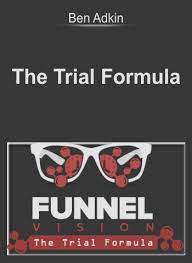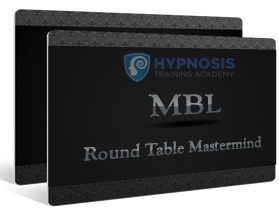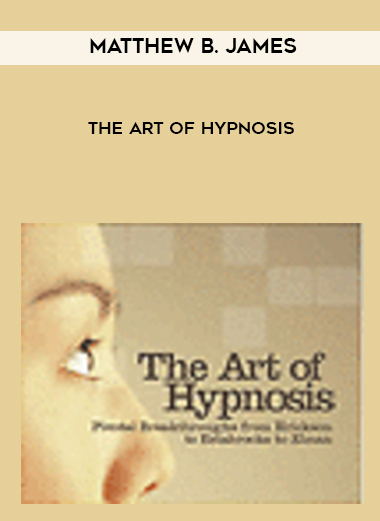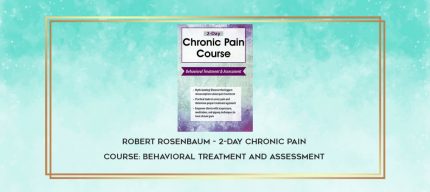Robert Rosenbaum – 2-Day Chronic Pain Course: Behavioral Treatment and Assessment
Salepage : Robert Rosenbaum – 2-Day Chronic Pain Course: Behavioral Treatment and Assessment
Archive : Robert Rosenbaum – 2-Day Chronic Pain Course: Behavioral Treatment and Assessment
FileSize :
- Faculty:
- Robert Rosenbaum
- Duration:
- 12 Hours 34 Minutes
- Format:
- Audio and Video
- Copyright:
- Apr 11, 2019
Description
Another client enters your office angry about the chronic pain they struggle with daily. They start sharing their story and the mask of frustration peels away to reveal the hopelessness and despair from living in a constant state of misery. Most clinicians are not trained in chronic pain, yet this scenario is becoming all too familiar, as at least 1/3 of our clients suffer from chronic pain. More and more clients are moving away from medication, seeking out holistic solutions, yet we’re not quite sure of the best way to help them.
Imagine helping your clients learn that while pain might be unavoidable, misery is optional. Strengthen the therapeutic relationship by validating the reality of clients’ pain while introducing ways to help them immediately experience a lessening of their distress. Explore acupressure and meditation to help clients discover how mind and body are connected.
In this recording, neuropsychologist, Dr. Robert Rosenbaum, will teach you the facts about pains’ biology and effective treatment strategies, so you can confidently educate and treat your clients. With experiential exercises such as guided imagery, acupressure, meditation, and gentle movement, combined with cognitive-behavioral methods, you’ll leave with the right skills and tools at your fingertips to treat chronic pain.
Handouts
| Manual – 2-Day Chronic Pain Course: Behavioral Treatment and Assessment (8.3 MB) | 90 Pages | Available after Purchase |
Outline
Impact of Chronic Pain on Mental Health
Primary Prevention
- The best treatment is prevention
- Early detection and early intervention
Pain Prevalence and Impact
- Incidence and prevalence: most common types
- Societal costs
- Impact on client mental health and quality of life
Sociodemographic factors
The Biology of Pain
- What is pain?
- Physical, emotional, psychological, and environmental factors
- Pain intensity vs pain distress
- Types of Pain
- Nociceptive and neuropathic
- Effect of location
- Etiology, temporal course, sensation
- Inflammation, cancer, Ischemic
- Acute vs chronic pain
- Pain transmission and modulation
- Neurochemicals of pain
- Pain, Brain, Strain
- Central sensitization
- The role of attention
- Pain: Beyond Basic Biology
- Biopsychosocial model
- Vicious circles of maladaptive coping strategies
- Psychological and emotional aspects of pain
- Pain’s effect on the sense of self
- Countering pain myths
Assessment, Interventions, and Management
Pain Treatment Options
- Medications and medical procedures
- Introduction to analgesics
- Opioids – Myths and Facts
The opioid epidemic
- Opioid efficacy, risks
- Tolerance vs. addiction
- Risk of addiction and abuse
Assessment
- Basic guidelines
- The interview
- Psychometric instruments
- Pain vs. distress
Behavioral Treatment
- Technique vs. relationship
- Mindfulness and other meditations
- The hype and the reality
- Focuses and open awareness
- Breathing techniques: four methods
- Comfort strategies: You Are Bigger than the Pain
- Awareness
- Importance of early detection
- Concretizing with imagery and names
- Re-Focus
- Widening and narrowing attention
- Going distal; going to the center
- Imagery and self-hypnosis
- Re-thinking
- CBT for catastrophizing
- Separate pain from distress
- Deal with flares
- Additional behavioral treatment tools
- Pacing
- Gentle movement
- The importance of face, hands, feet
- Acupressure self-massage
- Qigong for pain
- Sleep and rest
- Enjoy
- Cultivating positives
- Antidotes for difficult emotions
- Increasing emotional granularity
- Relate
- Foster positive relationships
- Deal with difficult relationships
Differential treatment considerations
Outcomes of integrative interventions
Research limitations and risks of psychotherapeutic approaches
Faculty
Robert Rosenbaum, Ph.D. Related seminars and products: 3
Robert Rosenbaum, Ph.D., has 30 years’ experience as a neuropsychologist, psychotherapist and behavioral medicine specialist. In addition to his numerous journal articles and book chapters on brief psychotherapy, he is also the author of the books Zen and the Heart of Psychotherapy; Walking the Way: 81 Zen Encounters with the Tao Te Ching and co-editor of What’s Wrong with Mindfulness (and what isn’t). He is entrusted as a Zen teacher by Sojun Roshi of Berkeley and San Francisco Zen Centers and as a senior teacher of Dayan (Wild Goose) Qigong by Master Hui Liu of the Wen Wu School.
Dr. Rosenbaum worked for over 26 years at Kaiser Permanente clinics in California, where at various times he was chief psychologist, head of the neuropsychological assessment program, developed the mindfulness-based behavioral portion of the chronic pain management program in Kaiser Oakland and started the first programs of Dayan Qigong (which subsequently spread to medical clinics throughout California). He also did research on brief psychotherapy, single-session therapy and psychotherapy integration.
In addition, he has been a Fulbright Professor at the National Institute of Mental Health and Neurosciences in India, the director of the doctoral training program at the California Institute of Integral Studies, and a consultant on brief psychotherapy to clinics and academic institutions in Australia, Japan, and Canada. Whenever he can, he spends several months a year hiking in the Sierras and the Himalayas.
Speaker Disclosures:
Financial: Robert Rosenbaum receives a speaking honorarium from PESI, Inc.
Non-financial: Robert Rosenbaum has no relevant non-financial relationship to disclose.












![Actioncoach.Kajab - Brad Sugars Profit Masters [Billionaire in Training] download](https://ivseeed.com/wp-content/uploads/2022/03/zz.jpg)



























Reviews
There are no reviews yet.